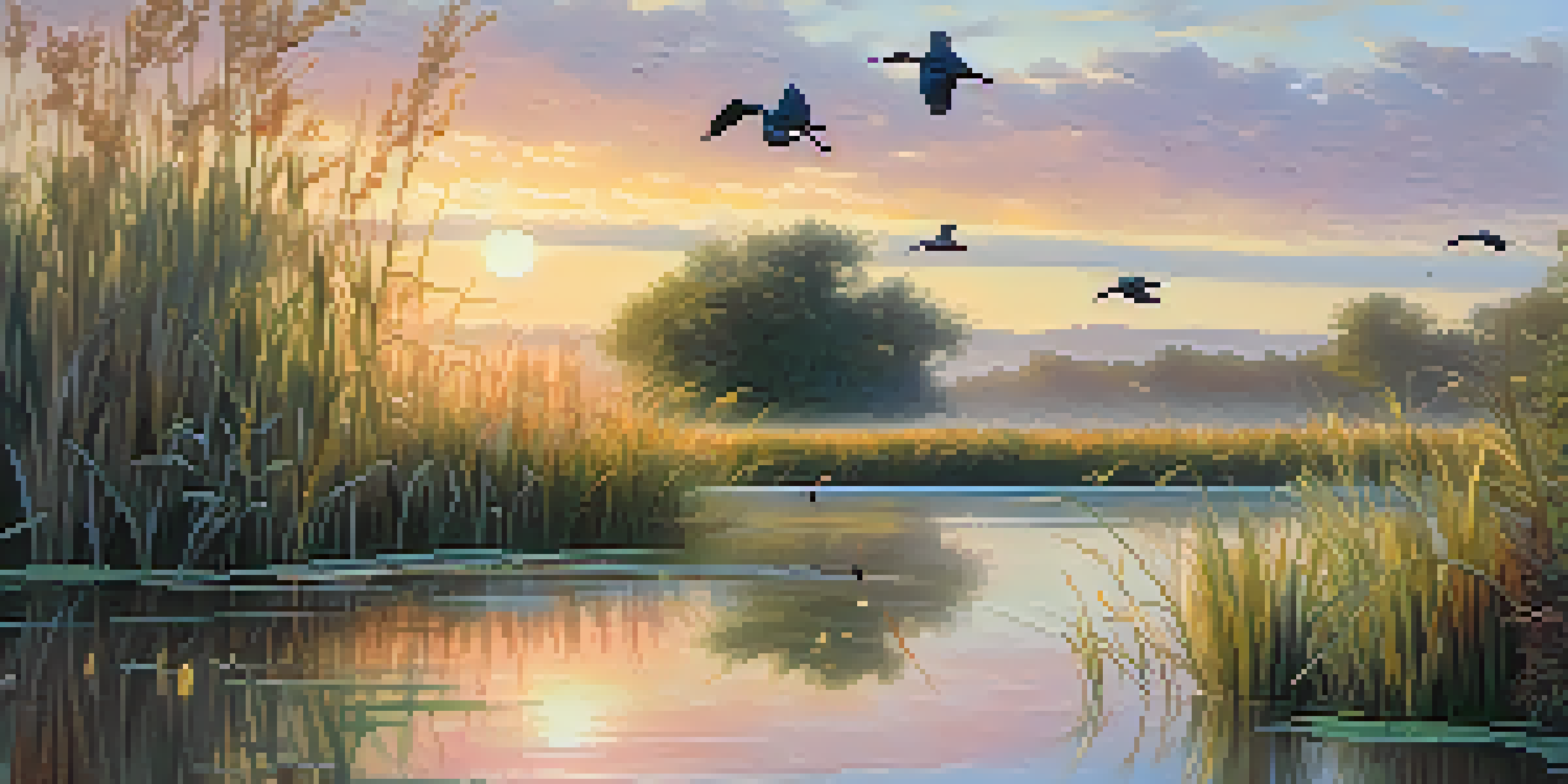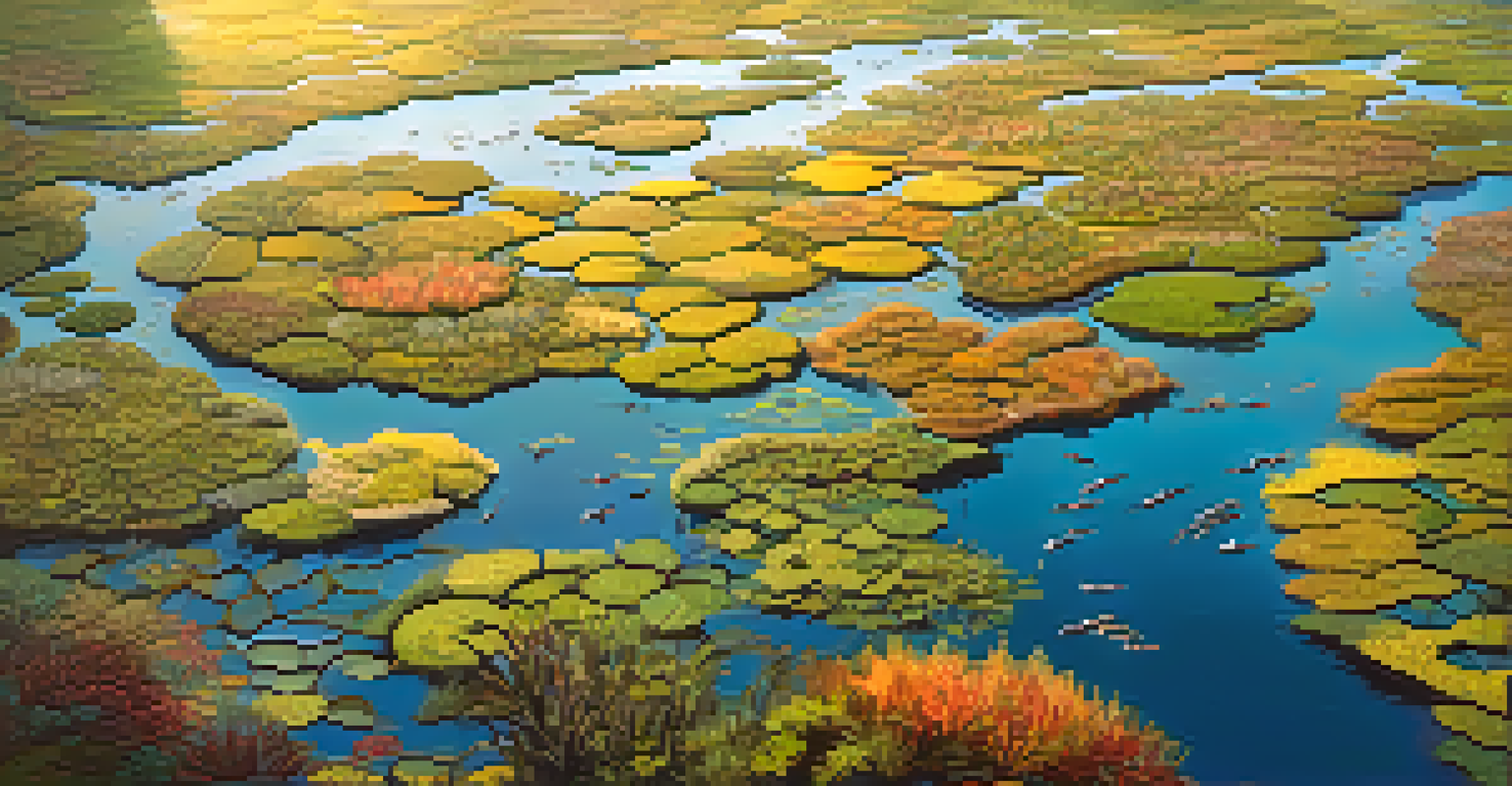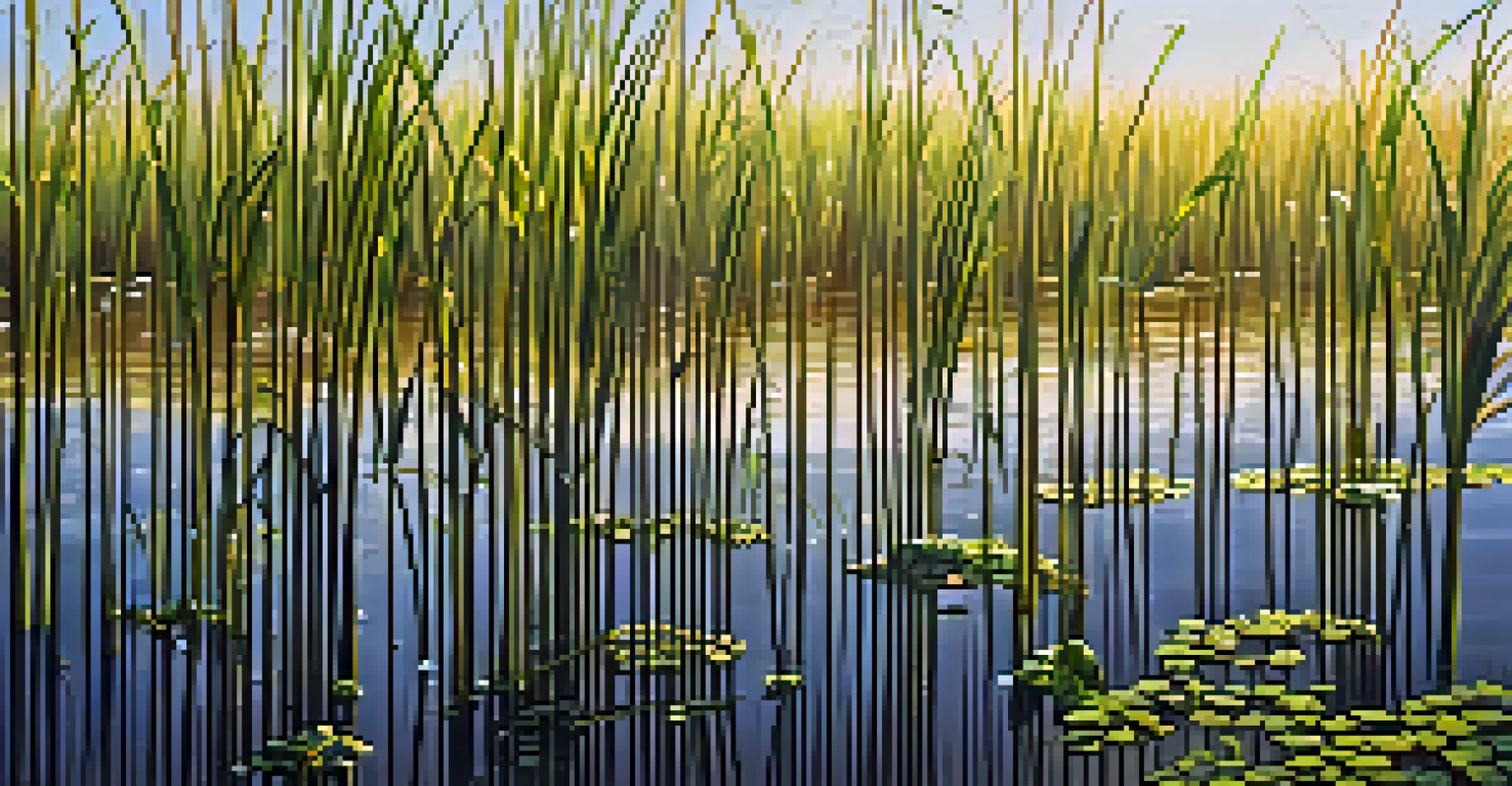The Importance of Wetlands in Peru's Biodiversity Conservation

Understanding Wetlands and Their Importance
Wetlands are unique ecosystems that are saturated with water, either permanently or seasonally. They include marshes, swamps, and bogs, and play a crucial role in maintaining the ecological balance. In Peru, these areas are vital for supporting a diverse range of plant and animal species, many of which are endemic to the region.
Wetlands are among the most productive ecosystems on the planet, providing essential services to both the environment and humanity.
These ecosystems act as natural filters, improving water quality by trapping pollutants and sediments. They also serve as buffers against floods, absorbing excess water during heavy rainfall and releasing it slowly. This natural regulation helps protect surrounding communities and agricultural lands, emphasizing the importance of wetlands in disaster management.
Moreover, wetlands are carbon sinks, meaning they store carbon dioxide that would otherwise contribute to climate change. By conserving and restoring these areas, Peru can mitigate the impacts of global warming while promoting biodiversity. This multi-faceted functionality highlights why wetlands should be prioritized in conservation efforts.
Biodiversity Hotspots in Peru's Wetlands
Peru is home to some of the most biodiverse wetlands in the world, hosting thousands of species of flora and fauna. For example, the Titicaca Lake region is famous for its unique fish species and aquatic plants. These wetlands provide essential habitats for migratory birds, contributing significantly to global bird populations.

Wetlands in Peru also support numerous endangered species, making them critical for conservation. The Amazon basin, for instance, is a rich tapestry of wetlands teeming with life, from jaguars to river dolphins. Protecting these habitats ensures the survival of these species and maintains the ecological integrity of the region.
Wetlands: Nature's Essential Ecosystems
Wetlands in Peru play a crucial role in maintaining ecological balance, acting as natural filters for water quality and buffers against floods.
Additionally, these ecosystems are interconnected with other habitats, creating corridors for wildlife movement. The preservation of wetlands can enhance biodiversity not only within their bounds but also in surrounding ecosystems. This interconnectedness underscores the need for a holistic approach to conservation.
The Role of Wetlands in Climate Regulation
Wetlands play a critical role in regulating the climate by sequestering carbon and maintaining hydrological cycles. In Peru, they act as natural buffers against climate extremes, helping to stabilize local weather patterns. By absorbing excess rainwater, wetlands reduce the risk of flooding and drought, which are increasingly common due to climate change.
The future will be green, or not at all.
The vegetation in wetlands, such as reeds and mangroves, captures carbon dioxide from the atmosphere, storing it in plant tissues and soil. This process is essential for mitigating the impacts of climate change, making wetland conservation a vital component of global climate strategies. By preserving these ecosystems, Peru can contribute to international efforts aimed at reducing greenhouse gas emissions.
Moreover, healthy wetlands enhance the resilience of communities to climate impacts. They provide vital resources, such as fish and plant materials, which support local livelihoods. Protecting these areas ensures that communities can adapt to changing climate conditions while maintaining their economic stability.
Threats to Wetlands in Peru
Despite their importance, Peru's wetlands face numerous threats from human activities. Urbanization, agriculture, and pollution have led to habitat degradation and loss. For instance, the expansion of agriculture often results in the draining of wetlands for crop production, which disrupts the delicate balance of these ecosystems.
Climate change further exacerbates these threats, with rising temperatures and altered precipitation patterns impacting wetland health. The increasing frequency of extreme weather events can lead to erosion and habitat destruction. This creates a vicious cycle where the loss of wetlands diminishes their ability to buffer against such changes.
Biodiversity and Conservation Needs
Peru's wetlands are biodiversity hotspots, supporting numerous endangered species and interconnected habitats that require holistic conservation efforts.
Additionally, unsustainable fishing practices and invasive species pose challenges to wetland biodiversity. Overfishing can deplete crucial fish populations, while invasive species can outcompete native flora and fauna. Addressing these threats requires coordinated conservation efforts and sustainable management practices.
Community Involvement in Wetland Conservation
Engaging local communities in wetland conservation is essential for the long-term success of these efforts. Indigenous populations often possess valuable knowledge about the ecosystems in which they live. By involving them in conservation initiatives, Peru can leverage this expertise to create more effective and culturally relevant strategies.
Community-led conservation projects can also provide economic incentives for protecting wetlands. For example, ecotourism can offer sustainable income while promoting awareness of the importance of these ecosystems. By fostering a sense of stewardship, local communities become active participants in preserving their natural heritage.
Education and outreach are crucial components of this involvement. By raising awareness about the ecological significance of wetlands, communities can advocate for their protection. This grassroots approach not only empowers individuals but also builds a collective movement toward conservation.
The Economic Value of Wetlands
Wetlands in Peru offer significant economic benefits that often go unrecognized. They provide essential resources, such as fish, plants, and clean water, which support local economies. Furthermore, wetlands play a vital role in agriculture by improving soil health and water availability, making them indispensable for food production.
Additionally, wetlands contribute to tourism, attracting visitors interested in birdwatching and nature exploration. This influx of tourists can generate revenue for local communities and create jobs related to conservation and eco-tourism. By highlighting these economic advantages, there’s a stronger case for protecting wetlands.
Economic Value of Wetland Resources
Wetlands provide significant economic benefits through resources like fish and clean water, as well as ecotourism opportunities that support local communities.
The sustainable management of wetlands can lead to long-term economic stability. Investing in conservation not only protects biodiversity but also ensures that communities continue to benefit from these ecosystems. Recognizing the economic value of wetlands is crucial for garnering support for conservation initiatives.
Future Directions for Wetland Conservation in Peru
Looking ahead, the future of wetland conservation in Peru hinges on effective policy and management strategies. Strengthening legal protections for wetlands is essential to safeguard these ecosystems from further degradation. By creating and enforcing regulations, the government can help ensure that wetlands are preserved for future generations.
Collaboration among stakeholders—government agencies, NGOs, and local communities—is key to successful conservation efforts. Sharing resources, knowledge, and expertise can lead to more cohesive and impactful initiatives. This collaborative approach fosters a sense of shared responsibility for the protection of wetlands.

Lastly, ongoing research and monitoring are vital for understanding the health of wetland ecosystems. By tracking changes and assessing the impacts of conservation efforts, Peru can adapt its strategies to address emerging challenges. A proactive and informed approach will be instrumental in ensuring the longevity of these critical habitats.